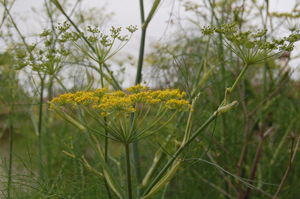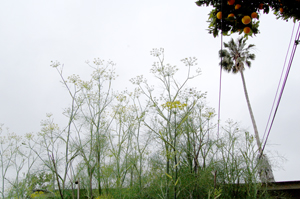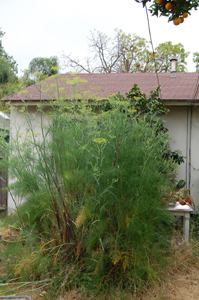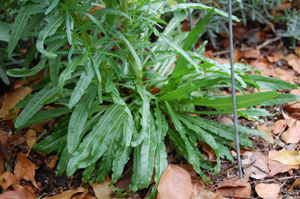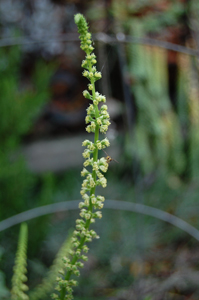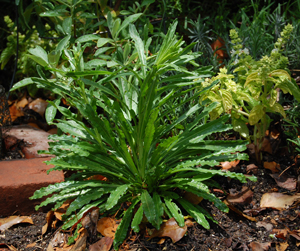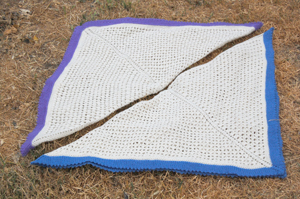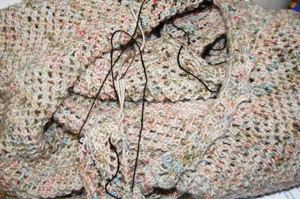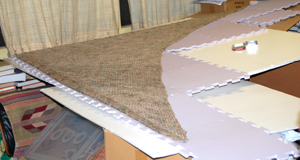Thank you Wikipedia for clearing this up. See tree lawn.
Most of my misspend youth and otherwise adult life has been spent living in apartments. The house-thing is still somewhat new to me. In particular, lawns I don’t get. Other than a source of compost and yellow dye they seem like a rediculous affectation. This is a desert – yes? As I have probably already said – should you have any doubts about where you are (climate-wise) having the car breakdown in the San Fernando Valley in July should be your wakeup call. But to keep peace with my neighbors I maintain a half-hearted lawn that provides compost and yellow dye.
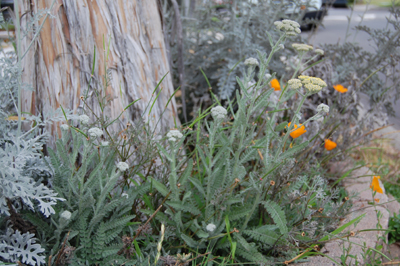
Area in the front is apparantly called a “parkway” or “treelawn” (see wiki). Although I’m from Warren, Ohio I don’t remember my parents calling anything a “devil strip”.
To the existing Japanese Yew tree and ratty lawn grass I’ve added some Dusty Miller, California Poppy and Yarrow. Dusty Miller because of my ongoing conflict with Snails. They want to party in various plants such as Basil (they mowed down an entire flat in one night but that’s a story for another day). Rather than kill things I generally perfer to annoy them so they go away on their own. The snails appered to like Geraniums so that came out. I have yet to see a snail on anyone’s Dusty Miller so that went in.
California Poppy. Well it is the state flower and drought tolerant. Yarrow. I just like Yarrow. It’s both a dye plant and a medicinal and I think its a nice looking plant. That seemed reason enough.
